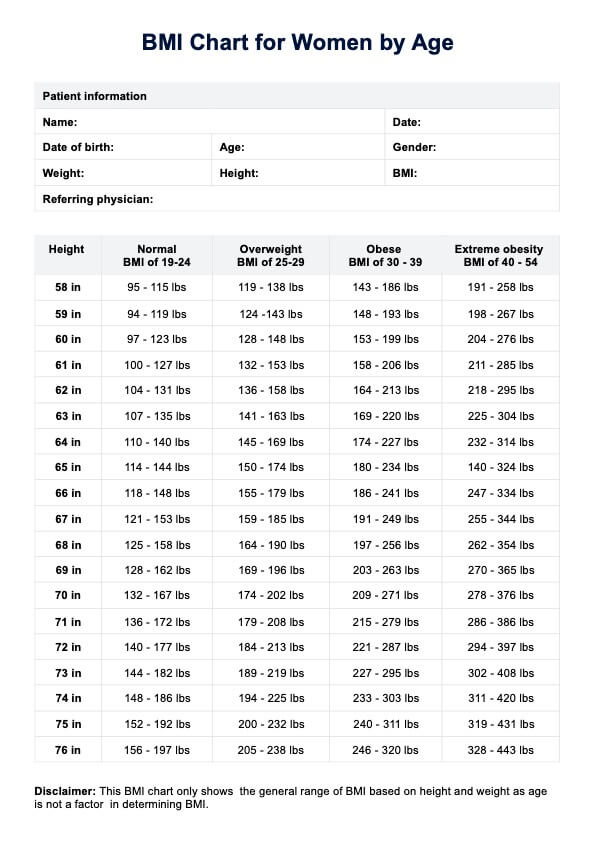A healthy BMI for women ranges from 18.5 to 24.9, similar to that for men. However, it is essential to note that a healthy BMI isn't the sole indicator of good health. The healthcare provider must consider other factors when assessing their patient's health.

BMI Chart for Women by Age
Use this body mass index (BMI) chart for women during consultations to guide your patients in making better decisions for their health.
Use Template
BMI Chart for Women by Age Template
Commonly asked questions
General practitioners and their female patients are the ones who often use a BMI chart for women as a resource.
A BMI of 34 can be categorized as Class 1 obese. It's only when the patient has a BMI of 40+ that one can consider them as morbidly obese.
EHR and practice management software
Get started for free
*No credit card required
Free
$0/usd
Unlimited clients
Telehealth
1GB of storage
Client portal text
Automated billing and online payments











